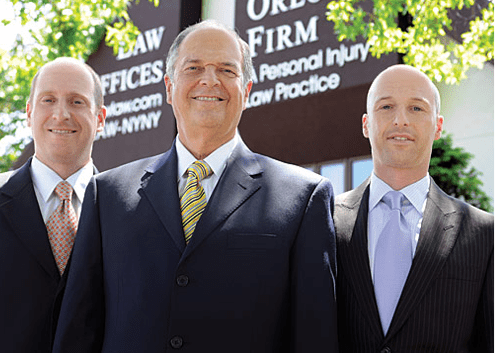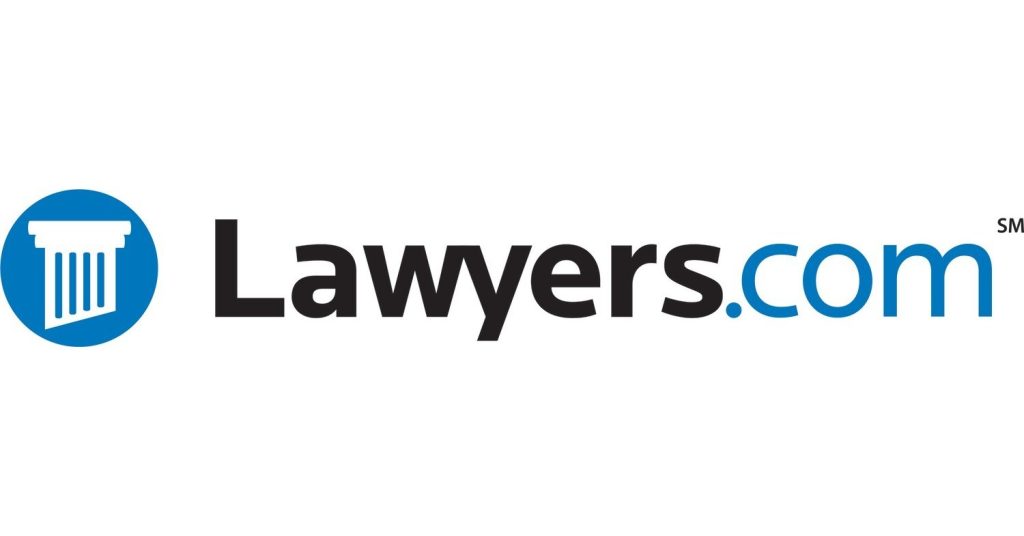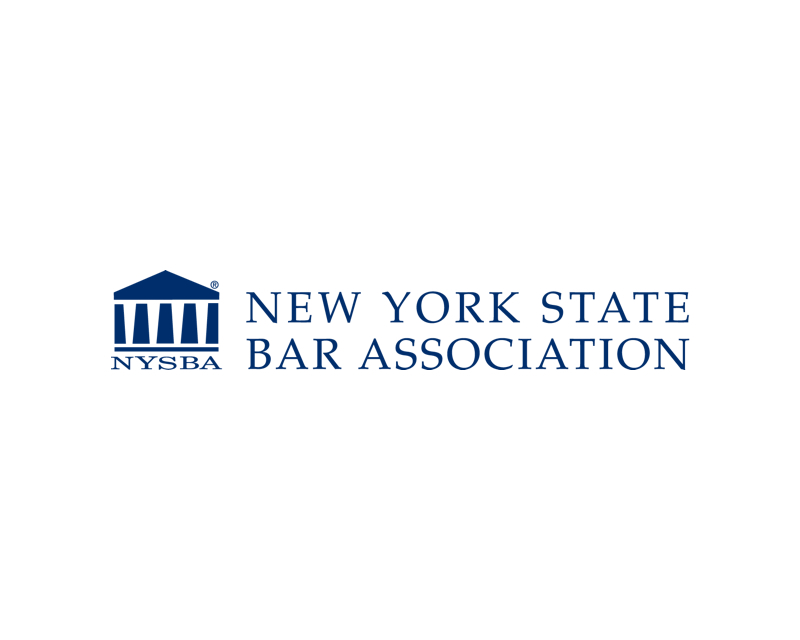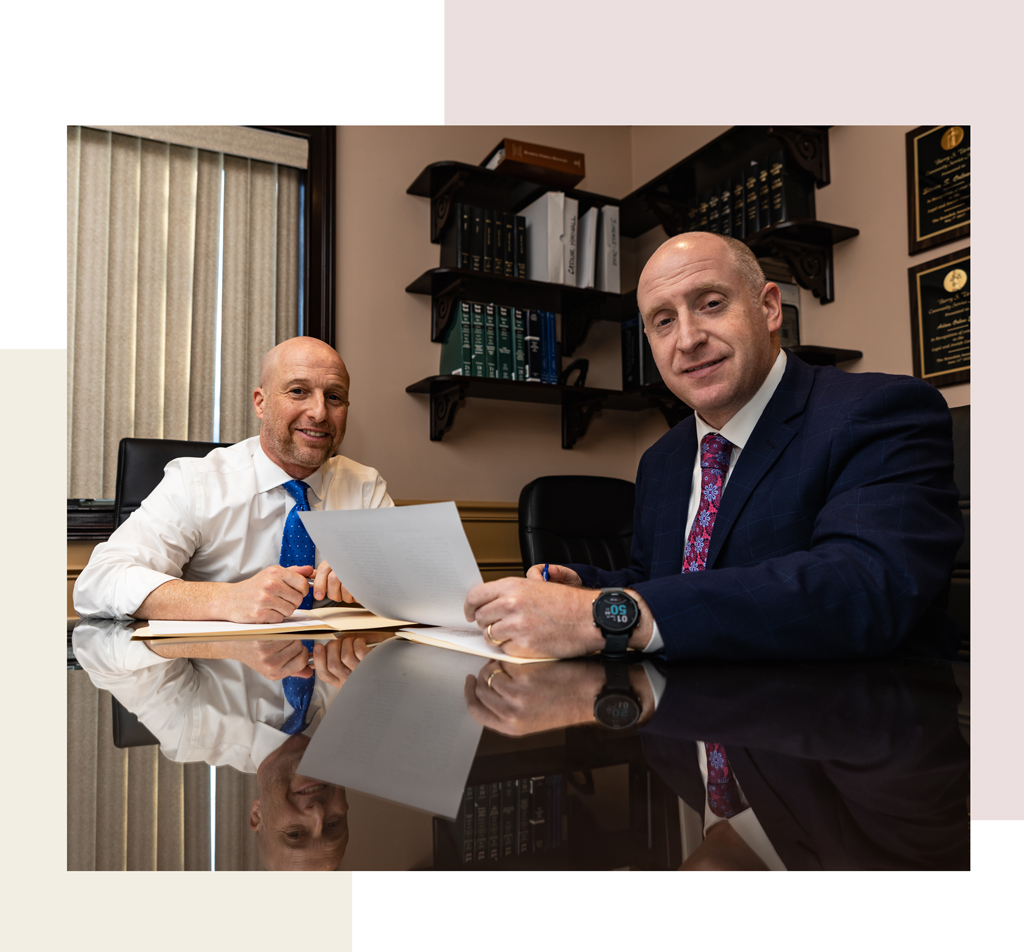The Following People Contributed to This Page
Cindy Cordova is a seasoned legal writer with over seven years of experience crafting clear, informative, and professional content for law firm websites. With a B.A. in English from Trinity Christian College, she combines her strong writing background with a deep understanding of legal topics to help firms connect with their clients through trustworthy and accessible content.
- September 19, 2025
What Is Joint and Several Liability in New York?
Quick Answer: In New York, joint and several liability is a legal principle stating that when multiple parties are found responsible for causing harm, each party can be held liable for the full amount of the damages, regardless of their individual percentage of fault. This means an injured plaintiff can seek the entire compensation amount from any one of the liable parties, even if that party was only partially responsible.
Here’s a breakdown of joint and several liability:
- Joint Liability: This aspect means that all liable parties are collectively responsible for the total damages.
- Several Liability: This aspect means that each individual liable party is also independently responsible for their own share of the damages.
- Joint and Several Liability: This principle combines both concepts. It allows the injured party to pursue the entire amount of damages from any single defendant, or from multiple defendants collectively.
- How It Affects Compensation: A key impact of joint and several liability is that if one of the liable parties is unable to pay their share of the damages, the other(s) can be held responsible for covering the unpaid portion, up to the full amount. This helps ensure the plaintiff receives full compensation for their losses, even if some defendants lack the financial means to pay. In simpler terms, if injured by multiple negligent parties in New York, a plaintiff can collect the total damages from the party with the most financial resources, even if that party was not the primary cause of the injuries.
- Example: Consider a car accident caused by two drivers. If one driver is found 90% at fault and the other is 10% at fault, but the 10% at-fault driver has more assets or better insurance, the injured plaintiff can legally pursue the full amount of damages from the 10% at-fault driver.
- Important Points:
- New York law utilizes a system of “pure” comparative fault. This means a plaintiff’s own negligence can reduce their total recovery, but they are not barred from suing even if they are partially at fault.
- Joint and several liability is frequently relevant in cases involving multiple defendants, such as accidents with multiple at-fault drivers or complex situations where pinpointing the exact degree of individual fault is challenging.
If you have questions about how joint and several liability might apply to your injury, or need legal help holding all responsible parties accountable, call The Orlow Firm’s personal injury lawyers at (646) 647-3398 for a free consultation.
How Does Joint and Several Liability Affect Your Personal Injury Case?
Joint and several liability can have a major impact on your personal injury case in New York. If more than one person or business caused your injury, the law allows you to hold all of them responsible together. This matters when it comes to getting the full amount of your compensation.
Let’s break it down. In personal injury cases, each person found at fault is assigned a percentage of the blame. But if you can’t collect your full damages from one of them—for example, if one person has no money to pay—you may be able to collect the entire amount from another at-fault party.
Here’s how joint and several liability affects you as an injury victim:
- Full recovery is possible: Even if one defendant is only slightly at fault, New York law may still require them to pay 100% of your damages if others cannot pay their share.
- Less worry about who pays what: You don’t need to track down every party who caused your injury. If one has insurance or assets, they might have to cover the whole amount up front.
- Shared payments behind the scenes: The paying defendant can later try to get reimbursement from the others. But you, as the injured person, still get your full payment first.
For example, suppose you trip and fall on a broken sidewalk in front of a storefront in the Bronx. The property owner is 60% at fault, while the business tenant is 40% at fault. If the tenant has no money or insurance, you can still collect your full damages from the property owner—even though they weren’t 100% at fault.
This rule helps protect victims so they can receive fair compensation, even when one or more of the responsible parties can’t pay. However, New York law does limit this rule in some non-economic damage cases if a defendant is less than 50% at fault. That means extra legal steps may be needed, depending on your case.
Understanding how joint and several liability works can make a big difference in what you’re able to recover. If you’ve been injured and more than one party is to blame, it’s important to explore all your legal options.
To learn more about how the law applies in your specific situation, contact The Orlow Firm at (646) 647-3398 for a free consultation.
Who Can Be Held Responsible Under Joint and Several Liability in NYC?
Under New York’s joint and several liability law, more than one person or party can be held responsible for the same accident or injury. This usually applies when multiple people or organizations contribute to someone getting hurt, and a court finds them legally at fault.
In personal injury cases, the people or groups that can be held responsible may include:
- Drivers involved in a car crash: If more than one driver caused the accident, each one can be held responsible for your injuries.
- Property owners: In a slip and fall case, both the store owner and a cleaning company could be responsible if they failed to keep the floors safe.
- Employers: If a worker was acting within the scope of their job when they caused harm, their employer may also be held liable.
- Manufacturers: In product defect cases, both the product maker and the distributor might be held responsible if the product caused injury.
- Government entities: If a city agency or public worker caused the harm, such as through a dangerous sidewalk or faulty traffic signal, they could be part of the lawsuit.
These parties can be sued together or separately. When they are sued together under joint and several liability, each one can be required to pay for the full amount of damages owed to the injured person. That means even if one party is only slightly at fault, they could be held responsible for all of the compensation if the others can’t pay.
This rule protects injured people by making sure they can recover full compensation, even if one or more of the people at fault has no money or insurance. However, defendants who pay more than their fair share may later try to recover money from the other responsible parties through a legal process called “contribution.”
If you’re unsure who may be responsible for your injury in New York City, it’s important to speak with a personal injury attorney. The Orlow Firm can help investigate your case and identify all the parties who may be held legally liable. Call (646) 647-3398 for a free consultation.
What Happens If One Defendant Can’t Pay Their Share?
When there is more than one person or company responsible for your injuries, joint and several liability laws in New York decide how compensation is paid. But what happens if one of those parties—the defendants—can’t pay their share? This is where joint and several liability becomes especially important.
Under New York law, if a defendant is found to be at least 51% at fault for your injuries, they can be held responsible for the entire judgment, even if others are also at fault. That means if another party cannot pay, the one who is mostly to blame may have to cover the unpaid amount.
If no single defendant is 51% or more at fault, New York still allows joint liability for economic damages, such as:
- Medical bills
- Lost wages
- Prescription costs
- Medical equipment or ongoing care
This means that if one defendant can’t pay their share of these economic damages, the other defendants may have to pay it instead—even if they were less at fault. This helps ensure that the injured person still receives the full compensation needed to cover their expenses.
However, the same rule does not always apply to non-economic damages, such as pain and suffering. In many cases, a defendant in New York who is found less than 51% at fault may not have to pay the full amount of non-economic damages owed by others.
For example: Imagine you slip on a wet floor in a New York City store. The store is found 60% at fault, and a cleaning contractor is found 40% at fault. If the contractor goes out of business and can’t pay, the store may be required to cover the full amount of your judgment—even the part the contractor was supposed to pay.
This rule helps protect injury victims in NYC. It makes sure your ability to recover money doesn’t depend on whether a defendant has insurance or can afford to pay. But it can make legal cases more complex, especially when settling who pays what.
If you’re dealing with multiple responsible parties and are unsure who will pay what, speaking with a personal injury lawyer in New York can help you understand your rights. The Orlow Firm has experience handling these types of cases throughout NYC. Call (646) 647-3398 for a free consultation.
How Is Fault Shared Among Multiple Defendants in New York?
In New York personal injury cases, more than one person or party can be held legally responsible for your injury. When this happens, the court must decide how much fault each person shares. This process is called apportioning liability, and it plays a key role in how damages are paid.
New York follows a rule called pure comparative fault. This means that each party is held responsible only for their share of the fault—unless joint and several liability applies in certain situations, such as when damages involve serious injuries or economic losses like medical bills and lost wages.
Here’s how fault can be shared among multiple defendants in New York:
- Each defendant is assigned a percentage of fault: For example, if a building owner and a construction company are both responsible for an injury, the court might decide the owner is 30% at fault, and the construction company is 70% at fault.
- Damages are divided based on fault: If the total compensation is $100,000, then the owner pays $30,000 and the construction company pays $70,000—if both are able to pay.
However, there is an important exception in New York law. If a defendant is found to be 50% or more at fault, they can be held jointly and severally liable for all of the economic damages. That means they could be required to pay the full amount of your economic losses if the other defendant(s) cannot pay their share.
For example, imagine you’re injured in a multi-car crash on the Brooklyn-Queens Expressway. If one driver was texting and another was speeding, both might be found at fault. If the texting driver is found 60% responsible and the speeding driver is 40% responsible, and the speeding driver can’t pay anything, the texting driver may be required to pay the entire amount of your medical bills and lost wages—not just their 60% share.
This rule helps make sure that injured people can still get full compensation, even if one party can’t afford to pay. It’s especially important in cases involving serious injuries, where the costs can be very high.
Understanding how fault is divided and how joint and several liability works can be confusing. If you’ve been hurt and more than one party may be responsible, it’s important to understand your rights. For personalized help, contact The Orlow Firm at (646) 647-3398 for a free consultation.
Can You Sue More Than One Person for the Same Injury in NYC?
Yes, in New York City, you can sue more than one person for the same injury. This is especially common in personal injury cases where more than one person or company caused the accident. In legal terms, this is possible because of New York’s rule of joint and several liability.
Joint and several liability means that each liable party can be held fully responsible for your total damages, even if they were only partly at fault. If you win your case, any one of the people or companies found responsible could be required to pay all the compensation owed to you.
Here are some common examples of how this works in New York City:
- Car accidents : If two drivers each made a mistake that led to your crash, both can be sued and held responsible for your injuries.
- Construction site injuries : A site owner, general contractor, and subcontractor might all be partly to blame if proper safety steps weren’t followed.
- Premises liability : If you slip and fall in a shared space, like an apartment building hallway, both the property owner and management company might be liable.
Suing more than one person or company can help you recover full compensation if one party can’t pay their share. For example, if one defendant has little or no money or insurance, the other defendants may still have to cover the full amount of your damages.
It’s important to know that while you can sue multiple people, you will not receive double or extra money. The total amount you can collect is based on your total losses. The people or companies you sue will be responsible for dividing that amount among themselves, based on each one’s level of fault.
If you’ve been injured and think more than one party may be at fault, it’s a good idea to speak with a personal injury lawyer. An attorney can help make sure all responsible parties are held accountable. To learn about your options, call The Orlow Firm at (646) 647-3398 for a free consultation.
How Does Joint and Several Liability Impact Your Compensation?
Joint and several liability can have a big effect on the amount of money you receive in a personal injury case. In New York, this rule means that if more than one person or party is found responsible for your injury, each of them can be held fully responsible for your entire compensation amount. This is true even if one party was only slightly at fault.
Here’s how this can impact your recovery:
- You can recover full compensation from one party: If one party has more money or better insurance, you may be able to get your full award from them—even if others were also at fault. That party can then try to collect from the others later.
- It protects injured people who might otherwise be underpaid: This rule helps make sure you aren’t left with less money just because one of the people responsible can’t pay.
- It can speed up payment of your damages: If one responsible party agrees to pay the full amount, you may not have to wait for long legal fights between the others.
Let’s say you’re injured in a car crash in the Bronx. The crash was caused by both the driver of the car you were in and a city truck that made an illegal turn. A jury finds the driver 30% at fault and the city 70% at fault. If the driver has no insurance or assets, you may be able to collect the full amount from the city under joint and several liability. From there, the city can try to get reimbursement from the driver if possible.
Keep in mind, under New York law, joint and several liability applies fully to financial damages like medical bills and lost wages. But the rules are a bit different for non-financial damages, like pain and suffering. If a defendant is less than 50% at fault, they may only be required to pay their share of non-financial damages unless certain exceptions apply.
This system is designed to help protect victims. It makes sure that you have a fair chance to recover the money you deserve—even if some of the people at fault have limited means to pay. However, understanding how this works in your case can be complex. That’s why having a personal injury lawyer can make a difference. If you’ve been injured in New York City and have questions about how joint and several liability may affect your rights, call The Orlow Firm at (646) 647-3398 for a free consultation.
What Are Common Cases Involving Joint and Several Liability in NYC?
In New York City, joint and several liability often applies in personal injury cases that involve more than one responsible party. This legal rule allows an injured person to hold one or more individuals or companies fully responsible for their damages—even if others also share part of the blame. Here are some common types of cases where joint and several liability may play a role in NYC:
- Motor Vehicle Accidents: If multiple drivers contribute to a crash, each one can be held jointly and severally liable. This means you can recover the full amount of your damages from one driver, even if others also caused the accident.
- Construction Accidents: Construction sites often involve many parties, including contractors, property owners, and equipment suppliers. If safety rules are ignored and a worker is hurt, several of these parties may share the blame—and liability.
- Medical Malpractice Involving Multiple Providers: If more than one healthcare provider makes a mistake, such as a doctor and a nurse in a hospital, they may all be held jointly and severally liable for the harm caused to the patient.
- Defective Products: If a person is injured by a defective product, both the manufacturer and retailer may be held responsible. Joint and several liability allows the injured person to seek full damages from one or both parties, regardless of how the fault is divided between them.
- Premises Liability Cases: These include slip and falls or other injuries caused by unsafe conditions on someone’s property. If a building owner and a maintenance company both failed to fix a known hazard, they can be jointly and severally liable for the injury.
In a busy city like New York, these types of cases are not uncommon. Many accidents involve several layers of responsibility, especially when public spaces or large companies are involved. Joint and several liability ensures that the injured party does not lose out on needed compensation just because one of the responsible parties cannot pay.
If you’ve been hurt in an accident involving multiple parties, understanding how liability works can be key to maximizing your recovery. Call The Orlow Firm at (646) 647-3398 to discuss your options with a personal injury attorney familiar with New York law.
Can Joint and Several Liability Be Limited or Challenged in Court?
Yes, in New York, joint and several liability can be limited or challenged in certain situations. While this rule is designed to help injured people get full compensation, there are laws in place that put some limits on how it’s applied—especially when it comes to non-economic damages like pain and suffering.
Under New York law, if a defendant (person or company being sued) is found to be less than 50% at fault for the injury, they may not be fully responsible for non-economic damages. These include pain and suffering, emotional distress, or loss of companionship. Instead, their share of those damages is based only on the percentage of fault they are assigned.
Here’s how limitations can apply in court:
- Less Than 50% at Fault: If a defendant is found to be 49% or less at fault, they are only responsible for their share of non-economic damages.
- More Than 50% at Fault: If a defendant is 50% or more at fault, they can still be held responsible for paying all the non-economic damages—even if others were also involved and cannot pay.
This rule does not apply to economic damages like medical bills or lost income. For those, joint and several liability still means that any one defendant could be required to pay the full amount if others can’t.
In court, defense attorneys may try to reduce or challenge their client’s share of liability. They could:
- Argue that their client was less than 50% at fault to avoid full responsibility for non-economic damages.
- Dispute how much fault should be assigned to other parties involved in the case.
- Question the severity of the plaintiff’s injuries to limit the overall amount of compensation awarded.
Because these legal issues can get complex, it’s important to work with a personal injury attorney who understands how New York law works. At The Orlow Firm, we’ve helped many clients in New York City deal with cases involving multiple liable parties. We can help figure out who may be legally responsible and how to pursue the full amount of compensation you may be entitled to.
If you’ve been injured and want to understand your rights under joint and several liability, call The Orlow Firm at (646) 647-3398 for a free, confidential consultation.
FAQ: Joint and Several Liability in New York Personal Injury Cases
- What does “joint and several liability” mean in New York?
In New York, joint and several liability means that if more than one person is found legally responsible for your injury, each one can be held fully responsible for paying your damages. Even if one person was only partly at fault, you can recover the entire amount from any one of them. - Is there a limit to joint and several liability in New York?
Yes. In many personal injury cases, a person who is found to be less than 50% at fault is only responsible for their share of non-economic damages, like pain and suffering. But they can still be fully responsible for economic damages, like lost wages and medical bills. - Can I collect full compensation from one defendant?
Yes. If more than one person is responsible, you may collect the full amount from just one of them. It becomes that person’s problem to collect money from the others later. - What if one defendant has no money or insurance?
If a defendant can’t pay, the other liable parties may have to cover the full judgment. This protects injured people and helps make sure they get the money they are owed. - Does joint and several liability apply in all NYC personal injury cases?
No. It mostly applies in cases like car accidents, construction accidents, and premises liability. The rules may vary depending on the type of claim and who is involved. - Why does New York use joint and several liability?
The law protects injured people by giving them a better chance to recover full compensation. Since some defendants may not have the ability to pay, this rule allows others to step in and pay the judgment. - What damages are covered by joint and several liability?
It generally applies to all economic damages such as:- Medical bills
- Lost wages
- Rehabilitation costs
- For pain and suffering, the rules are stricter. A defendant must be at least 50% at fault to be jointly responsible for non-economic damages.
- Can defendants sue each other after paying a judgment?
Yes. A defendant who pays more than their fair share can sue other responsible parties to recover money. This is called a right of contribution. - How does joint and several liability help injured victims in NYC?
It helps ensure that injured people are fully paid, even if one of the wrongdoers has little money or insurance. - Do I need a lawyer for a case involving joint and several liability?
These cases can be complicated. A personal injury lawyer can help you figure out who is responsible and make sure you pursue the full amount you’re owed. To talk about your case, call The Orlow Firm at (646) 647-3398 for a free consultation.
Injured in New York? Contact The Orlow Firm for a Free Consultation
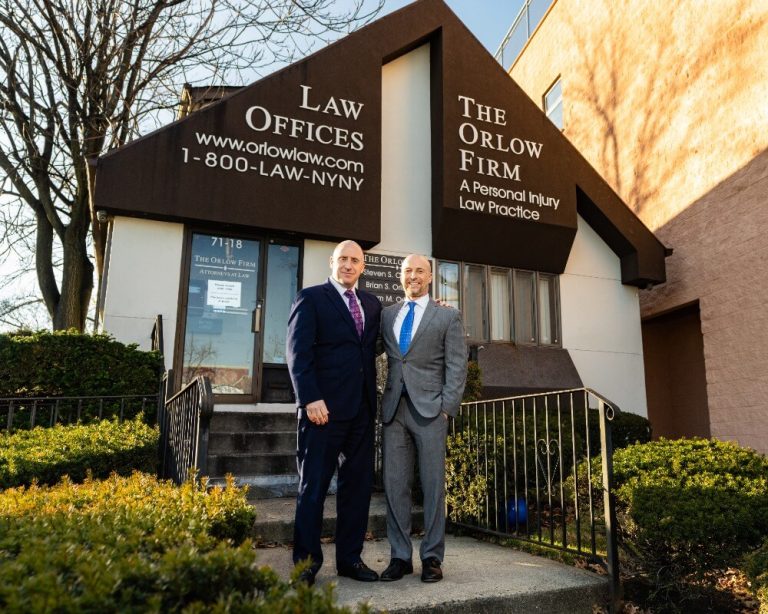
If you’ve been injured in New York City and multiple parties may be to blame, it’s important to understand how joint and several liability may affect your case. New York law allows certain injured individuals to hold more than one person or company responsible for their injuries. This is often the case in accidents involving car crashes with multiple drivers, unsafe buildings with many owners, or construction site accidents with various contractors.
Under joint and several liability, if more than one party is at fault, each one can be held responsible for paying the full amount of your damages. This can be crucial if one of the at-fault parties does not have enough money or insurance to cover their share. For example, if you were injured in a Brooklyn apartment due to poor maintenance, and both the landlord and a property management company are found partially at fault, you may be able to recover your full compensation from either one—not just their portion.
The Orlow Firm works with clients across all five boroughs of New York City. We help people who have been seriously hurt understand how joint and several liability can influence their personal injury claims. Our legal team can:
- Assess who may be held liable based on the specifics of your injury and accident.
- Build a case showing how different parties contributed to your injury.
- Protect your right to full compensation even if some defendants try to avoid paying.
Joint and several liability laws in New York can be complicated, especially when multiple people or companies are involved. You don’t have to figure it out on your own.
Call The Orlow Firm at (646) 647-3398 for a free, confidential consultation. We’ll listen to your story, explain your options, and help you take the next steps toward seeking the compensation you may deserve.
The Following People Contributed to This Page
Cindy Cordova is a seasoned legal writer with over seven years of experience crafting clear, informative, and professional content for law firm websites. With a B.A. in English from Trinity Christian College, she combines her strong writing background with a deep understanding of legal topics to help firms connect with their clients through trustworthy and accessible content.


